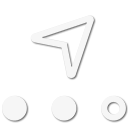I keep a toolbox tucked away towards the front of the bed with all the usual stuff, and though I have a Toyota I carry inch tools too just in case someone else needs something. I also keep a small tool pouch with the commonly needed tools around camp like small and medium size flat and Phillips screwdrivers, needle nose and regular slip joint pliers, utility knife, etc at the back of the bed so I don’t have to climb in and unload stuff and unstrap things to get something every time I need a screwdriver etc. this has been a very nice thing to have handy and has saved me a lot of time for little stuff around camp. I also keep some tie wire and a few zip ties and a roll of duct tape easy to get to. Since I’ve done this I haven’t had to get into the serious tool box so I can keep it well out of the way for packing everything else. If I need the real tools, I’m probably screwed and have plenty of time to unload... I use a Milwaukee 1/2” electric impact at work everyday so when I’m heading out on a trip I just throw it on the rear floorboard in case I need it and take it back to work. I also carry all types of fuses even though I only need one type since you never know who will need one and they don’t take much space as well as various lengths and sizes of fuel line, hose clamps, wire, tape etc... with past rigs I’ve saved hoses and belts I replaced with routine maintenance for my kit, but my new rig is still new enough I haven’t replaced anything yet. I carry plenty of tire plugs and the tools to use them. I’ve seen a guy use 7or 8 plugs to fill a gouge to get him off a trail after he already used the spare. If he didn’t have them he would’ve been screwed. Quality real jumper cables are something I won’t scrimp on, wire gauge makes all the difference and the cheap Walmart cables are all insulation and tiny wires that won’t start a really dead battery. I have isolated dual batteries so I can jumpstart myself, but I also keep a small portable jump pack behind the seat in case I need to jumpstart someone quick with that’s not totally dead. I have a small Costco air compressor that is actually pretty decent but is going to get upgraded soon with a twin arb. I don’t Air down as much as I would because airing up takes too long, so the new compressor should solve this. Commonly used extra fluids are also a good thing to carry, especially in an older rig that leaks a little or burns them. The strains of Off-roading will sometimes exasperate a normally managed leak and you’ll end up halfway to nowhere with lower than normal fluids. You never know what you’ll need so it can be hard to not bring the whole garage. Looking at the weak links and what will really strand you will usually help build your kit to be useful without becoming a snap on tool truck.
Sent from my iPhone using OB Talk














